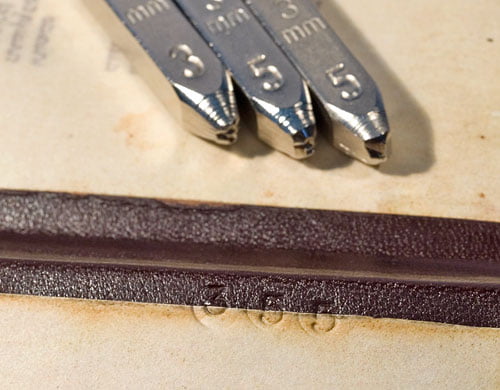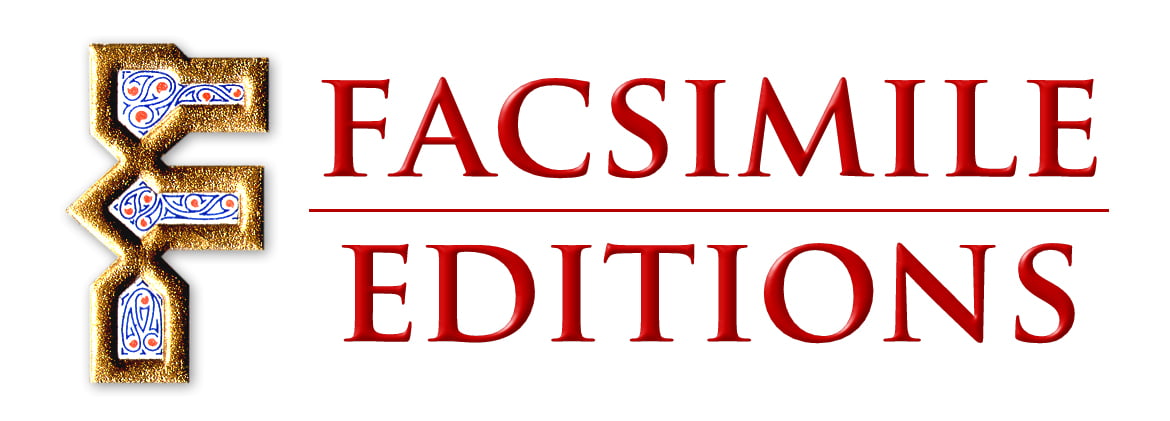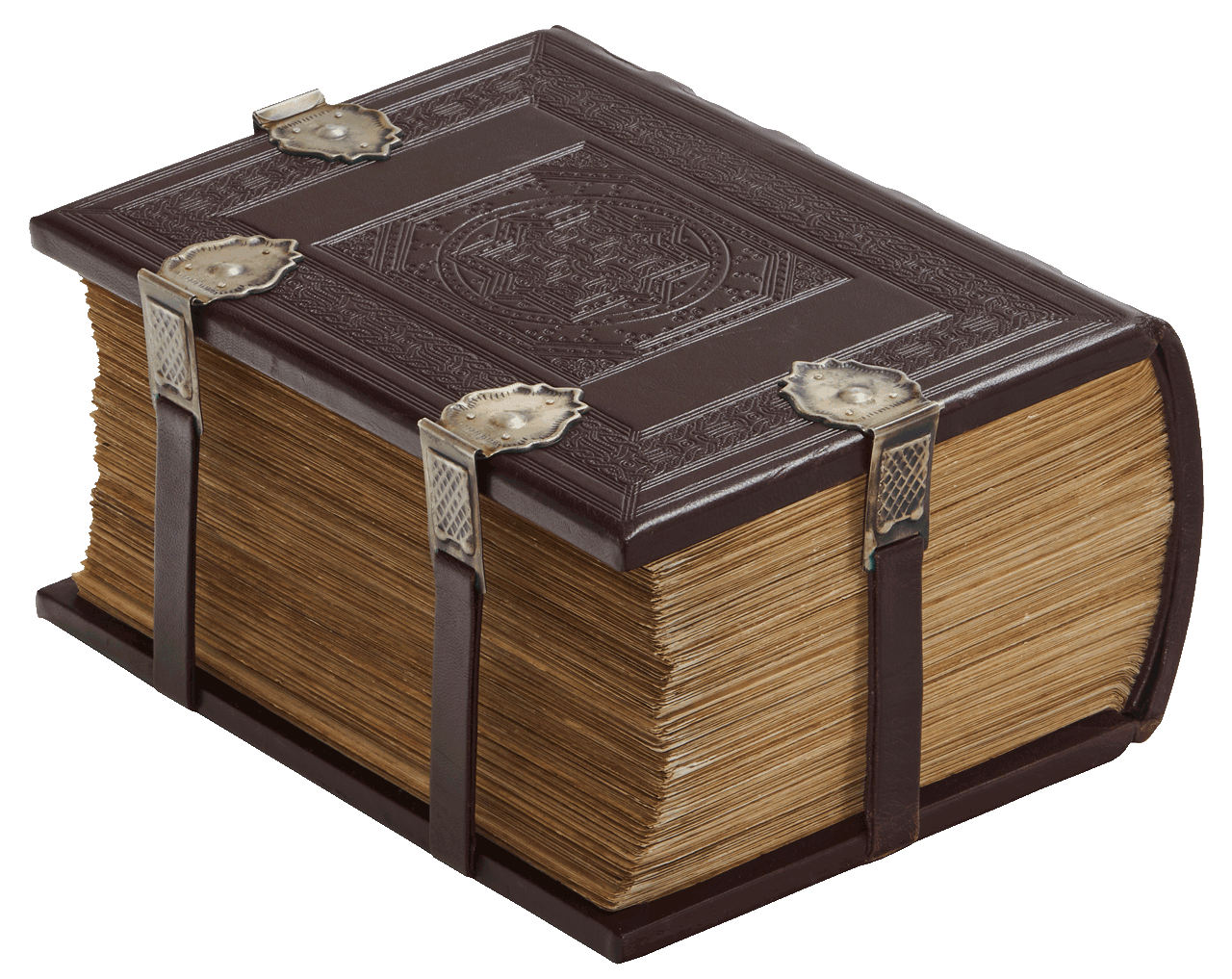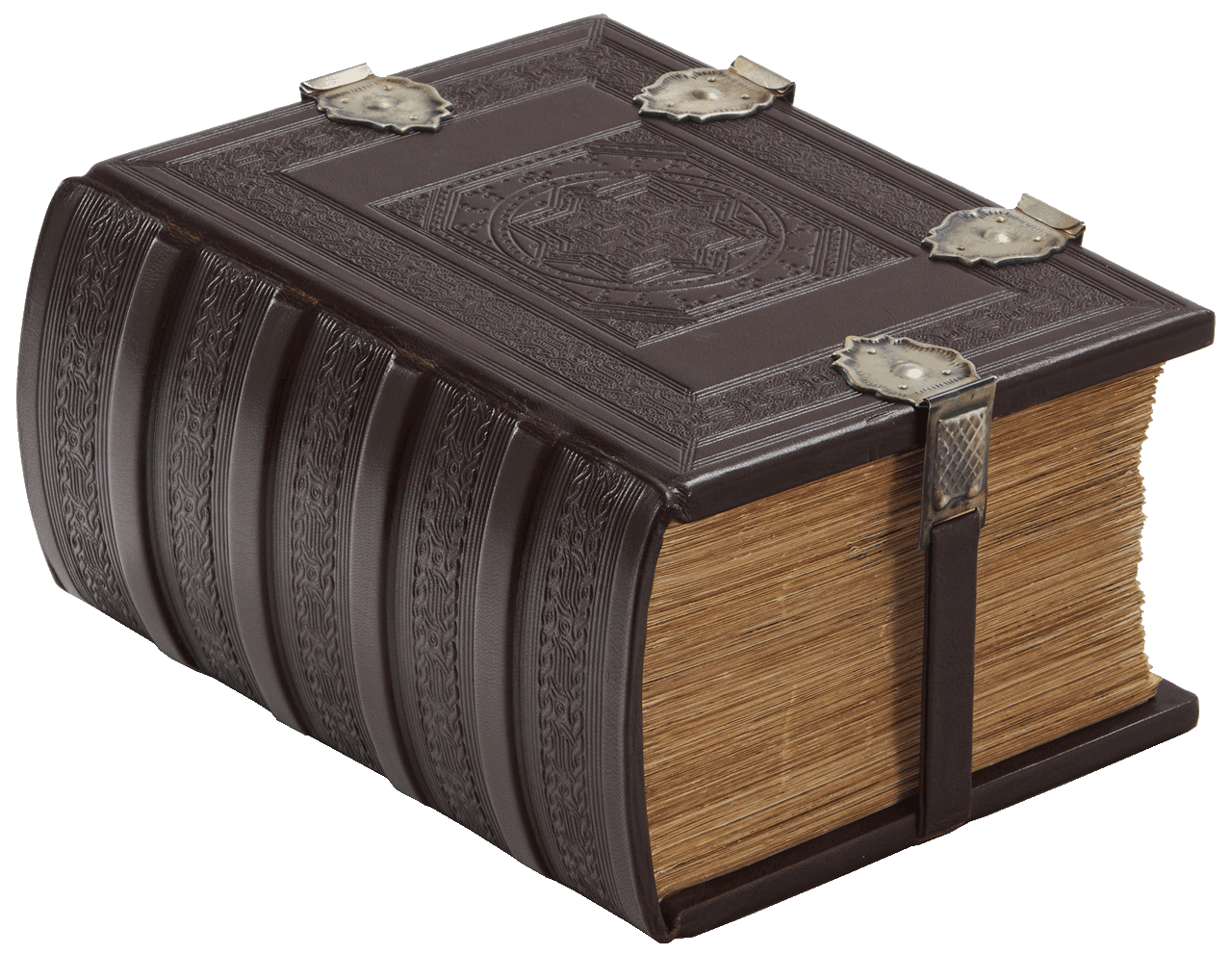From its inception the manuscript was planned as a sumptuous work to encompass almost every custom of religious and secular Jewish life mirroring Italian Renaissance miniatures. This richness of content has long led it to be considered as the most elegant and lavish of all Hebrew manuscripts. The Miscellany, probably made in a workshop in the Ferrara region echoes the style of the best artists who worked for the court of the Este and who may have been connected with the same artists who illuminated the famous Latin Bible of Borso d’Este.
The complete history of the Miscellany is somewhat of a mystery. From 1832 to 1855 the manuscript was in the Solomon de Parente collection in Trieste. It was later sold to the Rothschild family in Paris and remained there until it was stolen during the Nazi occupation. In May 1950, the Berlin bookseller Hugo Streisand, offered it for US$5,000 to the Jewish Theological Seminary. Alexander Marx, the Seminary’s librarian, recognised it as stolen from the Rothschilds and returned it to them in London. James de Rothschild was persuaded by Mordechai Narkiss that a manuscript of such importance was a national treasure and therefore belonged in Israel. In 1957, on hearing of Narkiss’ illness, James de Rothschild sent it as a gift to Jerusalem. The Scenes in the image below depict the Passover Seder.
Scenes depicting preparation for Passover and kiddush at the beginning of the Haggadah section ... more
These pages contain scenes from the Haggadah section which is probably the most beautifully illustrated of all Haggadot. Other pages depict the seder. Folio 156v, “Let all who are hungry come and eat; let all who are needy come and celebrate Passover with us.” … illustrates the blessing of the karpas (green herb, probably celery), eaten as an appetizer; with an affectionate gesture the master of the house offers it to his wife. The traditional large seder plate is on the table and it contains the food to be consumed during the Passover meal – three matzoth piled one on the other, a lettuce heart, bitter herbs (maror), and a leg of lamb, symbolizing the Paschal lamb. Alongside, in the second scene, there are two successive moments in the ritual – the breaking of the matzah, half of which is held by the master of the house and the removal of the seder plate from the table before the maggid (“Recite the Haggadah”) section.
On folio 157 a child asks the four questions that are essential to the reading of the Haggadah. “Why is this night different from all other nights…”
Following the instructions in the line above the illustration, another cup of wine is poured and we see a youth making this very gesture. At the moment that the answer to the four questions, “We were once slaves…,” is recited, the plate is brought back to the table by the youth as the ritual requires.
While comparable scenes may be found in Sephardi, Ashkenazi and Italian manuscripts, the unusual aspect here is the presence of the whole sequence. Many details here are unique interpretations.
These scenes depict piyyutim for Passover at the end of the Haggadah section.
This large collection of miscellaneous yet connected texts became the framework for an unprecedented programme of illumination. Of 948 pages, 816 are decorated in minute detail in vibrant colours, gold and silver. No other Hebrew manuscript equals the richness and scope of the illumination of this Miscellany.
The Facsimile
The Rothschild Miscellany at The Israel Museum, proved to be an even greater challenge than the Kennicott Bible, for the publishers’ philosophy dictates that a facsimile must be as close to the original in every possible aspect. Tremendous efforts were made to acquire the finest materials and craftsmen to impart to each volume not only the presence but also the feel of an original manuscript.
In order to reproduce the Rothschild Miscellany in the same uncompromising way, a great deal of research and further technical development was required for the manuscript is lavishly decorated on almost every page. The Falters moved to Italy to supervise every stage of the facsimile’s production and by combining craftsmanship and dogged determination with modern technology, remarkable results have been achieved.
Photography
Photographing the manuscript is the first stage in the production of the facsimile. In order to capture the fine detail, David Harris, photographed the manuscript at the Israel museum in Jerusalem on Ektachrome film using a large-format camera. To completely eliminate any curvature close to the spine, the manuscript was disbound so that its folios could be photographed flat.
Colour Separation, Proofing and Printing
The printing of the exquisite miniatures in twelve colours demanded skill and perseverance by Italian master-printers. Colour separations made from each of the manuscript’s 948 pages were used to make ‘wet’ proofs printed on the same paper as the facsimile. They were individually checked for colour fidelity against the manuscript in Jerusalem and then re-proofed in Italy (up to four times for each page) until the colour-match was exactly right.
Paper
The original manuscript’s folios were measured for thickness, weight and opacity and a new type of ‘paper’ virtually indistinguishable from the manuscript’s vellum, was specially milled in Italy. The result is a fine, neutral pH vegetable parchment with the same natural characteristics of skin that makes printing on it very difficult indeed. The Miscellany’ pages edges are brown with age and irregular, so, in the facsimile each one has been laboriously cut to exactly the same size and shape as the original and then “aged”.
Gold
No printing process can adequately simulate a manuscript’s gold leaf. Craftsmen applied the gold and silver metal by hand to 812 pages using a special building-up process to give the same raised effect as in the original, without embossing. This facsimile is the first to reproduce raised burnished gold accurately. In addition, the manuscript contains thousands of illustrations decorated with powdered and flat gold and silver. This too has been faithfully reproduced in the facsimile.
Holes
The scribe would have purchased the very best vellum available, but occasionally a skin would have a hole in it and, as the cost of vellum was high, the scribe could not afford to discard it. The holes in the facsimile were cut in exactly the same positions as the holes in the manuscript. Where holes appeared in the middle of a page the printing had to be positioned with perfect relative precision so that when the hole was cut, the text was not damaged.
Pricking and Bookworm
The pages of the manuscript contain the minute pricking marks made by the scribe between which he ruled parallel lines to guide him in the writing of the text. They were often trimmed off before binding but in the Rothschild Miscellany some pricking is still evident on many of the pages. This is the first time that pricking holes have ever been copied in a facsimile; their reproduction demanding a level of precision and accuracy previously unheard of in facsimile production. Similarly, the bookworm that attacked some of the pages over the ages has also been accurately reproduced.
Binding
As the manuscript’s original binding no longer exists, Mirjam Foot, formerly Director of Collections and Preservation at The British Library, London, suggested an exquisite Italian binding of the period, worthy of the manuscript, that has been copied in minute detail. The facsimile is bound in fine-grain morocco goatskin, blind-tooled on the front and back covers with morocco head and tail bands. The binding is secured by four silver clasps on morocco thongs; the thongs and clasps are attached to the binding by minute silver nails.
Numbering
Each facsimile volume’s unique number is permanently blind-stamped by hand into the binding using small metal dies. All the printing plates were destroyed, with rabbinic consent, so that no subsequent copies could be printed thus ensuring the uniqueness and value of the edition.
Presentation
The facsimile is presented in a cloth-bound hinged slipcase edged in morocco together with a similar slipcase for the commentary volume. Every set is accompanied by a certificate bearing the seals and signatures of both The Israel Museum and Facsimile Editions.
Personalised Dedication
Whether the facsimile is intended as a gift to an institution or a private individual, our calligrapher can inscribe an illuminated dedication in any language at no extra cost.
Commentary Volume
Five eminent scholars contributed to the commentary volume which describes the rich subject matter of the illustrations, the stylistic affinity and differences between the artists and their relation to general Italian illumination of the period, the historical and social background of the manuscript, the codicology, palaeography, religious and liturgical content of the Miscellany, and the binding. The commentary, illustrated in colour, is printed on Magnani mould-made paper with deckle edges in a separate volume and bound in blind-tooled morocco to complement the facsimile. The two volumes are presented in cloth-covered slip-cases, edged in goatskin.
A Spanish translation of the commentary is available free of charge if requested at the time of purchase.
Contents
Introduction
Iris Fishof (editor), formerly Chief Curator of Judaica and Jewish Ethnography, Israel Museum
Historical Background of the Manuscript
Shlomo Simonsohn, Professor of Jewish History, Tel-Aviv Unversity
The Literary Content of the Manuscript
Israel Ta-Shema, Professor of Talmud, Hebrew University, Jerusalem
A Palaeographical and Codicological Study of the Manuscript
Malachi Beit-Arié, Professor of Codicology and Palaeography, Hebrew University, former Director of the Jewish National and University Library, Jerusalem
The Facsimile’s Binding
Mirjam Foot, formerly Assistant Keeper in charge of Historical Bindings, British Library, London
The Illumination and the Artists
Louisella Mortara-Ottolenghi, Professor of Codicology and History of Illumination, Universita degli Studi di Milano
Additional Scholarship
Binjamin Elizur, Professor Raphael Loewe
The introduction deals with the physical description of the manuscript, and tells the story of its creation and programme. The illustrations were studied for their style and origin and the unique artistry of Joseph Ibn Hayyim is discussed in a special chapter interpreting his relations to both the older and contemporary art of Spain.
A fascinating story is told in a popular manner, with the thorough knowledge of experts augmenting the understanding of the Kennicott Bible for laymen and scholars alike.
The Commentary Volume contains many additional illustrations of comparative material and is produced as a separate volume the same size as the facsimile. It is bound in the finest morocco to complement the Miscellany. The two volumes are cased in a presentation portfolio box.
Specification
Codicology
• Israel Museum MS.180/51
• ISBN 0 948223 030
• Size 21cm x 15.6cm x 10.2cm (8¼” x 6 1/8″ x 4″) approximately (page sizes vary slightly)
• 948 Pages, 474 folios numbered 0-473
• 816 illuminated pages with raised burnished gold, flat gold, powdered gold, silver and brilliant delicate colours
Paper
• 160gsm, uncoated, neutral pH paper
• A paper mill in Italy took more than a year to make the 5 tons of paper to accurately reproduce the opacity, texture and thickness of the manuscript’s vellum, widely acclaimed as the closest likeness to vellum ever achieved. The paper was developed exclusively for this facsimile.
Colour Separation & Proofing
• Colour separations and wet proofs were printed on the same paper used in the facsimile and compared with the original manuscript in Jerusalem by Linda Falter and the team. Every gold dot was checked against the original. The proofs were marked up for correction and sent back to Italy for further proofs to be made. Up to four sets of proofs were made for each page.
Printing
• Offset lithography in up to twelve colours. It took four months to print the facsimile. During this entire time, Linda Falter was at the press ensuring, before allowing printing to proceed, that the colour reproduction of every page perfectly matched the proofs and that no hickeys or marks had crept onto the plates.
Paper
• 160gsm, uncoated, neutral pH paper
• A paper mill in Italy took more than a year to make the 5 tons of paper to accurately reproduce the opacity, texture and thickness of the manuscript’s vellum, widely acclaimed as the closest likeness to vellum ever achieved. The paper was developed exclusively for this facsimile.
Colour Separation & Proofing
• Colour separations and wet proofs were printed on the same paper used in the facsimile and compared with the original manuscript in Jerusalem by Linda Falter and the team. Every gold dot was checked against the original. The proofs were marked up for correction and sent back to Italy for further proofs to be made. Up to four sets of proofs were made for each page.
Printing
• Offset lithography in up to twelve colours. It took four months to print the facsimile. During this entire time, Linda Falter was at the press ensuring, before allowing printing to proceed, that the colour reproduction of every page perfectly matched the proofs and that no hickeys or marks had crept onto the plates.
Gilding & Application of Silver Leaf
• The three different types of gold found in the manuscript have all been faithfully copied in the facsimile. The raised burnished gold of the original has been reproduced by applying metal leaf to a built-up surface (replicating the original’s gesso) exactly where the leaf is raised in the original manuscript. Flat gold was reproduced by applying a metal leaf by hand. Gold powder was applied to all the illustrations that contain it in the original.
• Silver metal leaf was applied by hand wherever it appeared in the original and wherever the silver had oxidised, a darker leaf and special varnish was used to accurately portray the oxidation.
Pricking & Cutting
• The scribe’s pricking holes on each folio were reproduced for the first time ever in a facsimile.
• Once printed each page was cut to the exact size and shape of the original and then aged at the edges. No previously published facsimile has achieved this level of precision and accuracy.
Binding
• Fine morocco goatskin is blind-tooled on both covers and the spine. The book block is sewn over hand-made head and tail bands. Four oxidised sterling silver clasps are attached by leather thongs to silver catch-plates which are themselves attached by tiny silver nails.
Commentary Volume
• 256 pages (46 in colour) printed on mould-made cold-pressed Magnani 160gsm paper. The commentary volume is bound in blind-tooled morocco goatskin and presented in a cloth covered slip-case to compliment the facsimile.
Presentation
• The facsimile and commentary are individually housed in hand made slip-cases. The slip case for the facsimile has been specially constructed to accommodate the clasps.
Gift Certificate
• Each facsimile can be personally dedicated at no extra charge. Whether the facsimile is intended as a gift to an institution or a private individual, our calligrapher can inscribe a beautiful illuminated gift certificate.
Edition
• Strictly limited to 500 numbered and 50 Ad Personam copies. Each volume. discreetly numbered by hand on the inside back cover using minute steel dies, is accompanied by a numbered and signed certificate carrying the seal of the Israel Museum.
• On completion of the edition the printing plates were destroyed to protect the significant investment value of each facsimile.
Shipping & Insurance
• Price includes robust protective packaging, worldwide courier delivery (frequently overnight) and insurance at no extra charge.
Commentary Volume
• 256 pages (46 in colour) printed on mould-made cold-pressed Magnani 160gsm paper. The commentary volume is bound in blind-tooled morocco goatskin and presented in a cloth covered slip-case to compliment the facsimile.
Presentation
• The facsimile and commentary are individually housed in hand made slip-cases. The slip case for the facsimile has been specially constructed to accommodate the clasps.
Gift Certificate
• Each facsimile can be personally dedicated at no extra charge. Whether the facsimile is intended as a gift to an institution or a private individual, our calligrapher can inscribe a beautiful illuminated gift certificate.
Edition
• Strictly limited to 500 numbered and 50 Ad Personam copies. Each volume. discreetly numbered by hand on the inside back cover using minute steel dies, is accompanied by a numbered and signed certificate carrying the seal of the Israel Museum.
• On completion of the edition the printing plates were destroyed to protect the significant investment value of each facsimile.
Shipping & Insurance
• Price includes robust protective packaging, worldwide courier delivery (frequently overnight) and insurance at no extra charge.
The Contents of the Rothschild Miscellany
The contents of the Rothschild Miscellany encompasses the religious beliefs and facsinating secular interests of an educated, Renaissence person. The following comprehensive table of contents was prepared by Binyamin Elizur in Jerusalem. A Hebrew/English version may be downloaded here and his research into the dating of the manuscript may be downloaded here. In the following index, marginal text is highlighted in blue.
1b Psalms Rashi’s commentary to Psalms
40a List of Psalms
41a Contents of Tashbez (on margins of pp. 79-123)
44a Contents of Hayyey Olam (on margins of pp. 124-133)
45b Job Rashi’s commentary to Job up to 42,3
63a R. Jacob Nazir’s commentary on Job 40,25-41,26
65b Proverbs Rashi’s commentary to Proverbs
79b Daily Shaharit (Morning Service) R. Shimshon b. Zadok – Tashbez
99a Daily & Sabbath Arvit (Evening Service)
101a Bamme Madliqin (Tractate Shabbat chapter II)
103a Sabbath Shaharit (Nishmat)
108b Sabbath Musaf (Additional Service)
110a Sabbath Minha (Afternoon Service)
110b Saturday night Arvit
111b New Moon Musaf
112a Sabbath & New Moon Musaf
113a Anenu on fast days; Nahem on the Ninth of Ab
113b Al Hanissim on Hanukkah & Purim
114a Megilla Benedictions
115a Festivals Shaharit & Musaf
117b Watodienu for Festivals on Saturday night
118a Bettering a bad dream
118b Berit Mila (Circumcision)
119a Grace after Meals for Circumcision
120a Harahaman (Grace after Meals Hymn) for Circumcision
120b Wedding Benedictions
121b Burial Service (Ziduq Hadin)
122b Grace after Meals for a Mourner
123a Eruv Tavshilin (Amalgamation of Dishes)
123b Eruv Hazerot (Amalgamation of Courts)
124a Rules of Various Blessings R. Yonah Gerondi – Hayyey ‘Olam (Eternal Life)
125b Grace after Eating
127a Travelling Prayer; Havinenu (shortened prayer)
127b 11 Verses beginning and finishing with nun
128a Pitum Haqetoret (Compound forming the Incense)
128b 72 Verses and the Names coming out of them
130b New Moon Blessing
131a Qiddush for Festivals
132a Service for Rosh Hashana (New Year)
133b R. Samuel – Minhagim (Customs)
134b Musaf for Rosh Hashana
138a Avinu Malkenu (‘Our Father, Our King’ – Litany)
139a Viduy for Yom Kippur (Confession on the Day of Atonement)
140b Service for Yom Kippur
142a Musaf for Yom Kippur
143a Ne’ilah (concluding prayer) for Yom Kippur
147a Hosha’anot for Sukkot (Appeal to God for Deliverance on the Feast of Tabernacles)
149b Hosha’anot for Hosha’ana Rabba (7th Day of Sukkot)
155b Haggadah shel Pesah (Passover Haggadah) Maimonides’ Passover Laws
166b Pirqey Avot (Sayings of the Fathers) Maimonides’ commentary to Chapter Heleq
174b Maimonides’ Eight Chapters (preface to Tractate Avot) Abraham Ibn Daud – Book of Tradition
185a Maimonides’ commentary on Tractate Avot
190a Isaac Israeli – excerpt from Yesod ‘olam
191a Maimonides’ Biography by Solomon b. Yihyun
191b R. Joseph Ibn ‘Aqnin – Introduction to the Talmud
199a Ma’ariv (evening prayer Hymn) for the 1st night of Pesah
199b R. J. Ibn ‘Aqnin – Treatise on Weights & Measures
200b Ma’ariv for the 2nd night of Pesah
202b Ma’ariv for the 7th night of Pesah Musar ‘Ali ben Sina (Aristotelian)
204a Ma’ariv for the 8th night of Pesah
205b Ma’ariv for the 1st night of Shavu’ot (Pentecost)
206a Josippon (Medieval pseudo-Josephus)
206b Ma’ariv for the 2nd night of Shavu’ot
209b Ma’ariv for the 1st night of Sukkot (Tabernacles)
210a Ma’ariv for the 2nd night of Sukkot
212a Ma’ariv for the 8th night of Sukkot (Shmini ‘Azeret)
213b Ma’ariv for the last night of Sukkot (Simhat Torah)
214b Yozer for Sabbath Bereshit (morning prayer Hymn on Sabbath after Simhat Torah)
217a Yozer for Sabbath Hanukkah
220a Yozer for the 2nd Sabbath Hanukkah
222b Yozer for the 1st intermission (between Shqalim & Zakhor)
223b Yozer for the 2nd intermission (between Zakhor & Para)
225b Zulat for the 1st Sabbath after New Moon of Iyyar
226a Zulat for the 2nd Sabbath after New Moon of Iyyar
226b Zulat for the 3rd Sabbath after New Moon of Iyyar
227a Zulat (middle of Shema blessigs Hymn) for Portion Behar
228a Yozer for the Sabbath before Shavu’ot
229b Zulat for the 1st Sabbath after 17th of Tamuz
230a Zulat for the 2nd Sabbath after 17th of Tamuz
231a Yozer for Sabbath Nahamu (the Sabbath after the 9th of Ab)
233a Yozer for Sabbath Shuva (the Sabbath between New Year & the Day of Atonement)
235a Yozer for the Intermediate Sabbath of Sukkot
236b Yozer for Simhat Torah
238b Taking out the Scrolls of the Law for Simhat Torah
239b Reshut for Hatan Torah (Permission Hymn for the Valedictorian of the Torah)
240a Reshut for Hatan Bereshit
240b Hymns for Simhat Torah
241b Yozer for Sabbath & New Moon
243b Yozer for Sabbath & Circumcision
246a Yozer for Sabbath & Marriage
248b Reshut & Hymns for Hatan (Bridegroom)
251a Selihoth for the fast of the 1st Monday
256b Selihoth for the fast of Thursday
259a Selihoth for the fast of the 2nd Monday
262a Selihoth for the fast of the 10th of Tebeth
265b Selihoth for the fast of the 17th of Tamuz
269a Selihoth for Ta’anit Esther (Esther’s Fast -13th of Adar)
272a Reading the Law & the Haftarah for Fasts
273b Shir Hakavod (Hymn of Praise)
275a Josippon (continuation)
298a R. Shem-Tov Ibn Phalaquera – Book of Degrees
298b Isaac Ibn Sahula – Proverb of the Ancients
334b Chronicles of Moses
341b Midrash va-Yissa’u (The Wars of the Sons of Jacob)
343a The Story of Hiram King of Tyre
343b Maimonides’ Letter to Lunel Scholars on Astrology
347a Yeda’ayah ha-Penini – Examination of the World
357b Apologia – Y. ha-Penini to R. Solomon Adret
372b The Prince and the Hermit (Abraham Ibn Hasdai – translator)
382a Judah Ibn Shabtai – Tribute of Judah the Misogynist
393b R. Issac b. Meir of Duren – Gates of Dura
418b Secret of Secrets (Pseudo Aristotle)
433b Isaac Ibn Hunayn – Apothegms of the Philosophers
440a Decisions of R. Isaac of Corbeil
445b Enactments of R. Gershom ‘Light of the Exile’
447b Testament of R. Judah ‘the Pious’
449a Differences between Palestinian & Babylonian Jews
450a Mishpat Hibbut ha-Kever (Beating of the Grave)
451a Alphabet of Ben Sira (Pseudo Ben-Sira)
455a Collection of Rabbinic Sayings (by numbers 3-10)
458b Death of Alexander the Great
463a Rules for determination of the calendar
464b Joseph ha-Ezovi (of Perpignan) – Silver Bowl
467b Judah Halevi – Poem for Sabbath Zakhor (before Purim)
469b Judah Halevi – Poem for Pesah
471a Determination calendar of cycles 271-283 (1371-1617) [the calendar only until cycle 279 (until 1541)]
471b Solar cycle (28 years)
472a Lunar cycle (cycle 276)
473a Table of contents

A close-up of the facsimile’s irregular page edges which exactly match the size of those in the original manuscript.

A hole in one of the facsimile’s leaves.
Even the efforts of a bookworm have been painstakingly reproduced!

 Pricking along the spine edge of the facsimile’s pages.
Pricking along the spine edge of the facsimile’s pages.
The corresponding pricked holes on the outer edge of the page are not visible here.
Pricking refers to the series of vertically aligned holes down each side of a parchment sheet between which the scribe ruled horizontal lines to aid his writing. Although, they were often trimmed off before the manuscript was bound, where they do occur in the original, they are reproduced in our facsimiles.
This short British Library video describes function pricking plays in the creation of a manuscript.

Small steel dies are used to blind-stamp the facsimile’s number into the binding

The silver clasps and catches are attached to the binding with minute silver nails.























